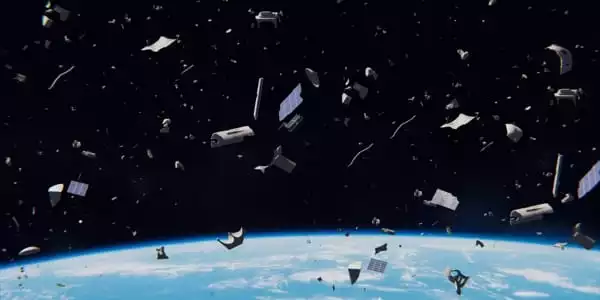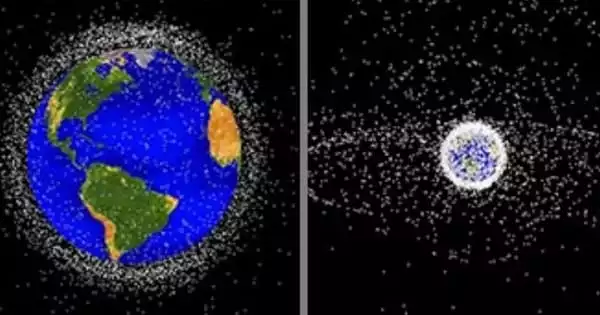Mechanical engineers have discovered a method of manipulating orbiting space debris using spinning magnets, allowing agencies to move more quickly when clearing out space junk or repairing satellites. According to NASA, there are more than 27,000 pieces of space debris larger than a softball orbiting Earth at speeds of up to 17,500 mph, fast enough for a small chunk to damage a satellite or spacecraft like an intergalactic cannonball.
As a result, cleaning up this space junk will be critical if agencies are to launch more rockets and satellites into orbit. Jake J. Abbott, a mechanical engineering professor at the University of Utah, is leading a team of researchers who have discovered a way to manipulate orbiting debris using spinning magnets. Robots could one day gently maneuver the scrap to a decaying orbit or further out into space without actually touching it, or they could repair malfunctioning objects to extend their life.
Their findings are detailed in a paper published this month in the science journal Nature titled “Dexterous magnetic manipulation of conductive non-magnetic objects.” U graduate students Lan Pham, Griffin Tabor, and Ashkan Pourkand are among the co-authors, as are former graduate student Jacob L. B. Aman and U School of Computing associate professor Tucker Hermans. A copy of the paper can be found here.
That kind of dexterous manipulation has never been done before. Scientists could use this new knowledge to stop a damaged satellite from wildly spinning in order to repair it, which was previously not possible.
Tucker Hermans
The idea is to use spinning magnets to move metallic, non-magnetized objects in space. When the metallic debris is exposed to a changing magnetic field, electrons circulate within the metal in circular loops, “just like when you swirl your cup of coffee and it goes around and around,” Abbott says.
The process converts the debris into an electromagnet that generates torque and force, allowing you to control where the debris goes without physically grabbing it. While the concept of using magnetic currents to manipulate objects in space is not new, Abbott and his team discovered that using multiple magnetic-field sources in a coordinated fashion allows them to move the objects in six degrees of freedom, including rotation. Previously, it was only known how to move them in a single degree of movement, such as pushing them.

“What we wanted to do was manipulate the thing, not just shove it, but actually manipulate it like you do on Earth,” he says. “That kind of dexterous manipulation has never been done before.” Scientists, for example, could use this new knowledge to stop a damaged satellite from wildly spinning in order to repair it, which was previously not possible.
“You have to take this crazy object floating in space and get it into a position where it can be manipulated by a robot arm,” Abbott says. “However, if it’s spinning out of control, you could break the robot arm, which would just create more debris.”
This method also enables scientists to manipulate objects that are particularly delicate. While a robot arm’s claw can cause damage to an object because it applies force to only one part of it, these magnets apply a gentler force to the entire object, ensuring that no one section is harmed. To put their theory to the test, the researchers used a series of magnets to move a copper ball on a plastic raft in a tank of water (the best way to simulate slow-moving objects in microgravity). The magnets not only moved the sphere in a square pattern, but they also rotated the ball.
This newly discovered process, according to Abbott, could be used with a spinning magnet on a robotic arm, a stationary magnet that generates spinning magnetic fields, or a spinning super-conductive electromagnet like those used in MRI scanners. Abbott believes that manipulating nonmagnetic metallic objects with magnets could have applications other than clearing space debris. “I’m starting to broaden my horizons in terms of potential applications,” he says. “We’ve developed a new method for applying a force to an object for precise alignment without having to touch it.”
However, for the time being, this concept could be used to help solve the problem of space junk orbiting the Earth. “NASA tracks thousands of pieces of space debris in the same way that air traffic controllers track planes. You must be aware of their location because you may inadvertently collide with them “Abbott claims. “The United States government and the governments of the world are aware of this problem because more and more of this stuff is piling up with each passing day.”





